Why Traditional Banks are No Longer Lending to Small Businesses
Remember the days when you’d need funding to start or grow your business, and you’d get in your car and head down to the bank on the corner?
You knew your banker personally, perhaps even had kids in the same class at school, or would often see them at your favorite local restaurant. This personal relationship helped fuel a strong financial relationship; you knew exactly where to go to get the loan you needed.
But, the days of driving to your local bank for a business loan are long gone. Not only are community banks getting eaten up by the big banks, but bank lending to small businesses is at an abysmal rate. If you’re a small business owner, and you walk into a bank, you’ve got around an 80% chance of getting denied. Yep. That’s right.
Instead of sitting here, drowning in these depressing statistics, let’s take a look at why this drop in small business bank lending is happening.
Why lending to small businesses is declining
When small business lending took a hit during the recession, most thought it was purely a victim of the economic downturn and would eventually inch its way back up.
However, that hasn’t been the case. The total dollar volume of bank loans to SMBs has declined by 20% since the start of the recession. And, it just continues to trend down. Here is why:
- Increased regulation. Post-recession, banks have had to tighten up their standards and be extra-cautious about the risk in their portfolios. Remember, they are making these loans with my money, your money, and your neighbor’s money. Hence the reason they have to be so cautious. Unfortunately, small businesses are inherently riskier than their larger counterparts, which makes banks think twice before extending them credit.
- Downturn in community banking. Small businesses have historically had more success finding a loan at a community bank than a big bank. In fact, community banks have 3 times the approval rates on small business loans than the big banks. But, our number of community banks have been declining since the 1980’s, inadvertently hurting America’s job creators. With fewer community banks, there is less opportunity for business owners to find a loan at a traditional banking institution.
- Less profit on smaller loans. More often than not, small business owners are looking for smaller loan amounts. In fact, our average loan size at Premier Business Lending is $50,000. Other data shows that about 80% of small businesses want loans that are less than $500,000. But, it doesn’t make financial sense for banks to provide these smaller loans. Why? It costs banks just as much to underwrite a $1 million dollar loan as it does a $100,000 loan. Therefore, they can make way more money focusing on larger loans. At the end of the day, banks are businesses too.
When you stop and look at the reasons banks have cut their lending to small businesses, it makes sense. But, it is still frustrating that business owners are having to face so much rejection. That being said, small business owners need to learn to approach their loan search differently. It’s no longer about expecting the banks to give you credit; it’s about being aware of multiple ways to fund your business and preparing to try a few different sources.
But, what are other sources of funding outside the bank?
Meet “alternative” lending. Online lenders have started emerging over the years to help fund borrowers that can’t find capital at the bank, and given the decline in bank lending to small businesses, the alternative lending industry is booming.
Alternative lenders are simply any non-bank lender. These lenders can most often be found online, as they don’t have physical storefronts like the banks. They include well-known companies like Can Capital and Premier Business Lending, as well as hundreds of lesser-known companies. These alternative lenders are offering traditional term loans, invoice financing, short term loans, and more.
So, as you can see, there is hope. As these online lenders mature and their underwriting algorithms get smarter, online lending could very well become the “norm” and end up being able to compete with banks on price.





